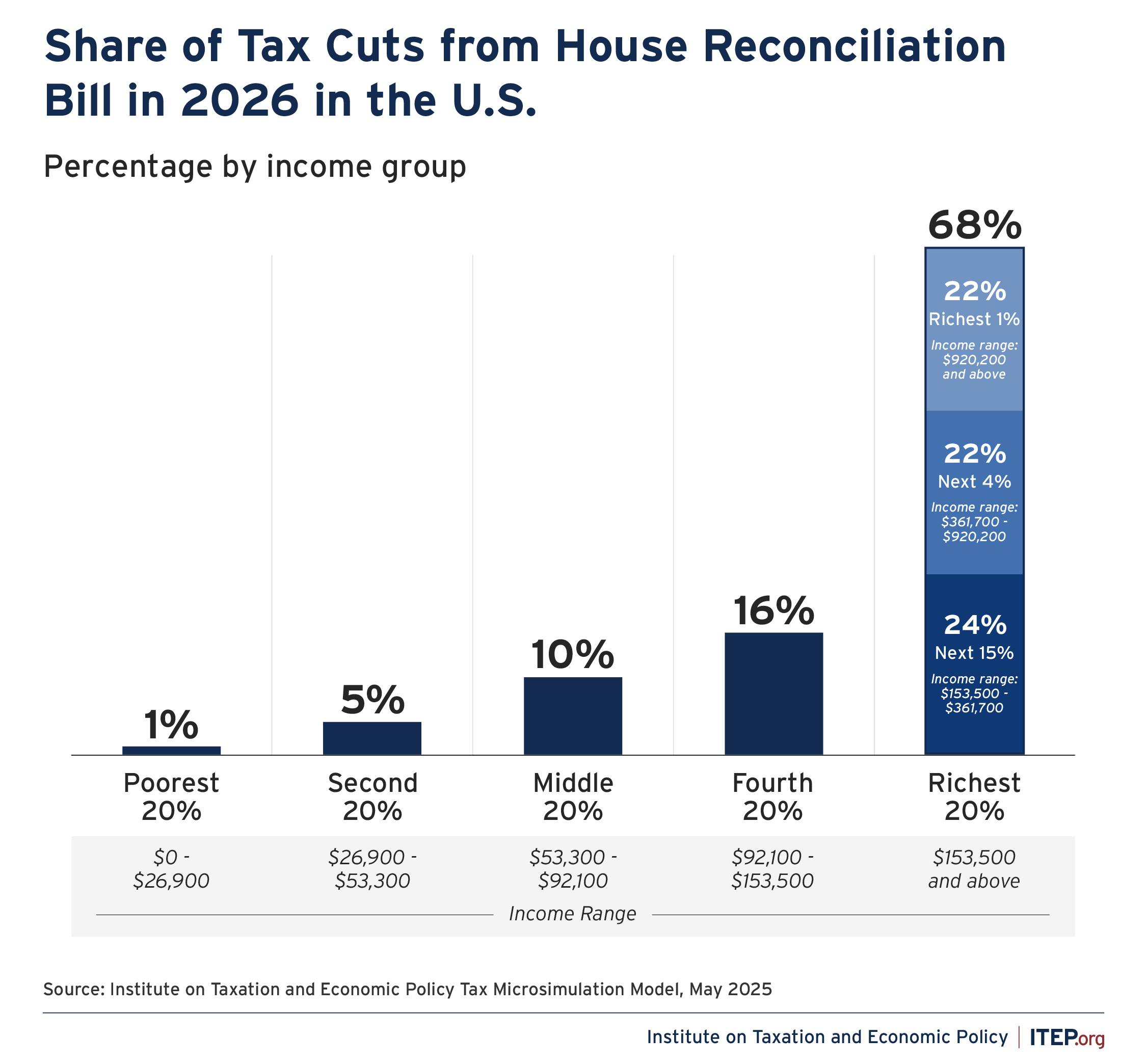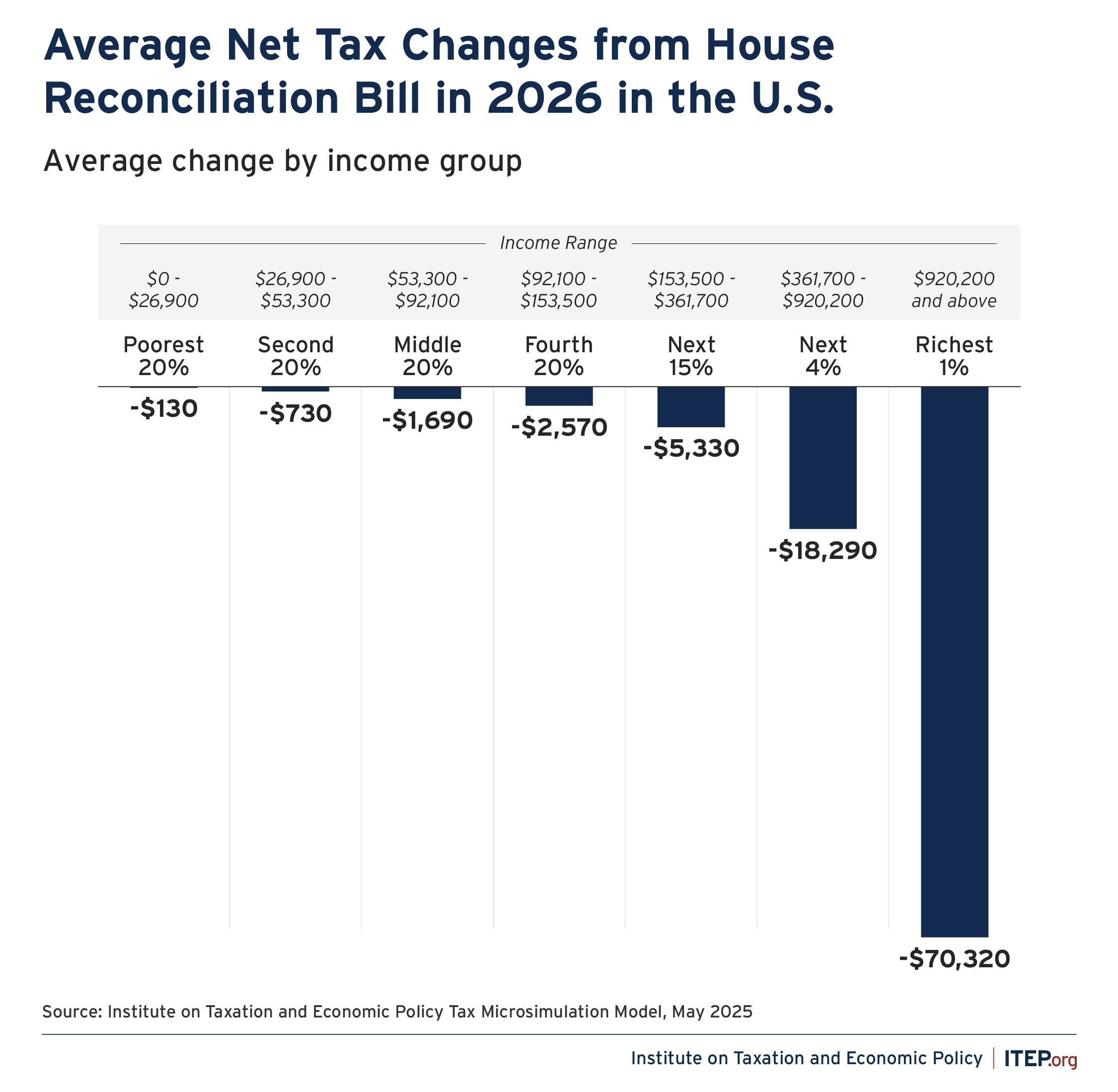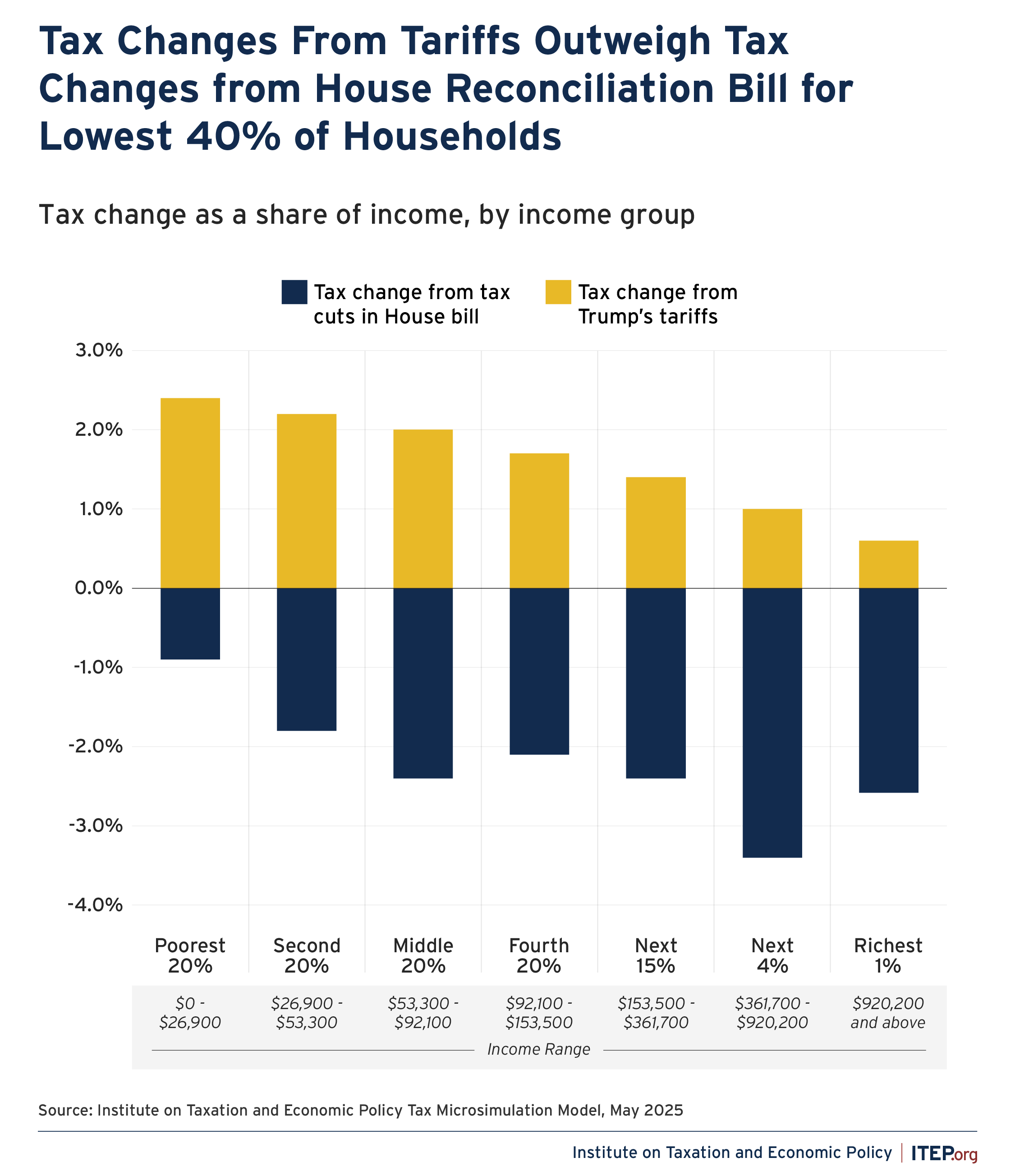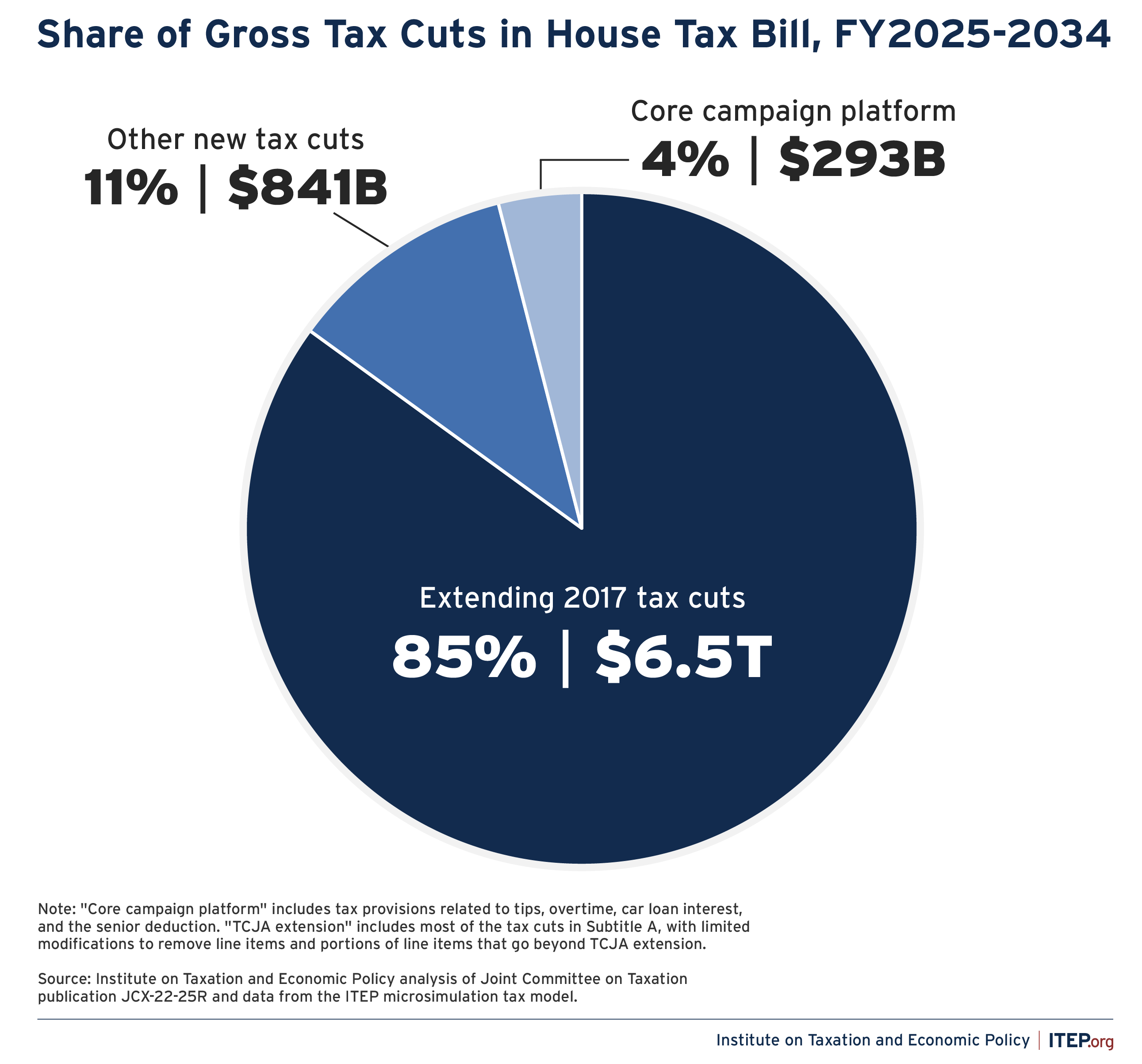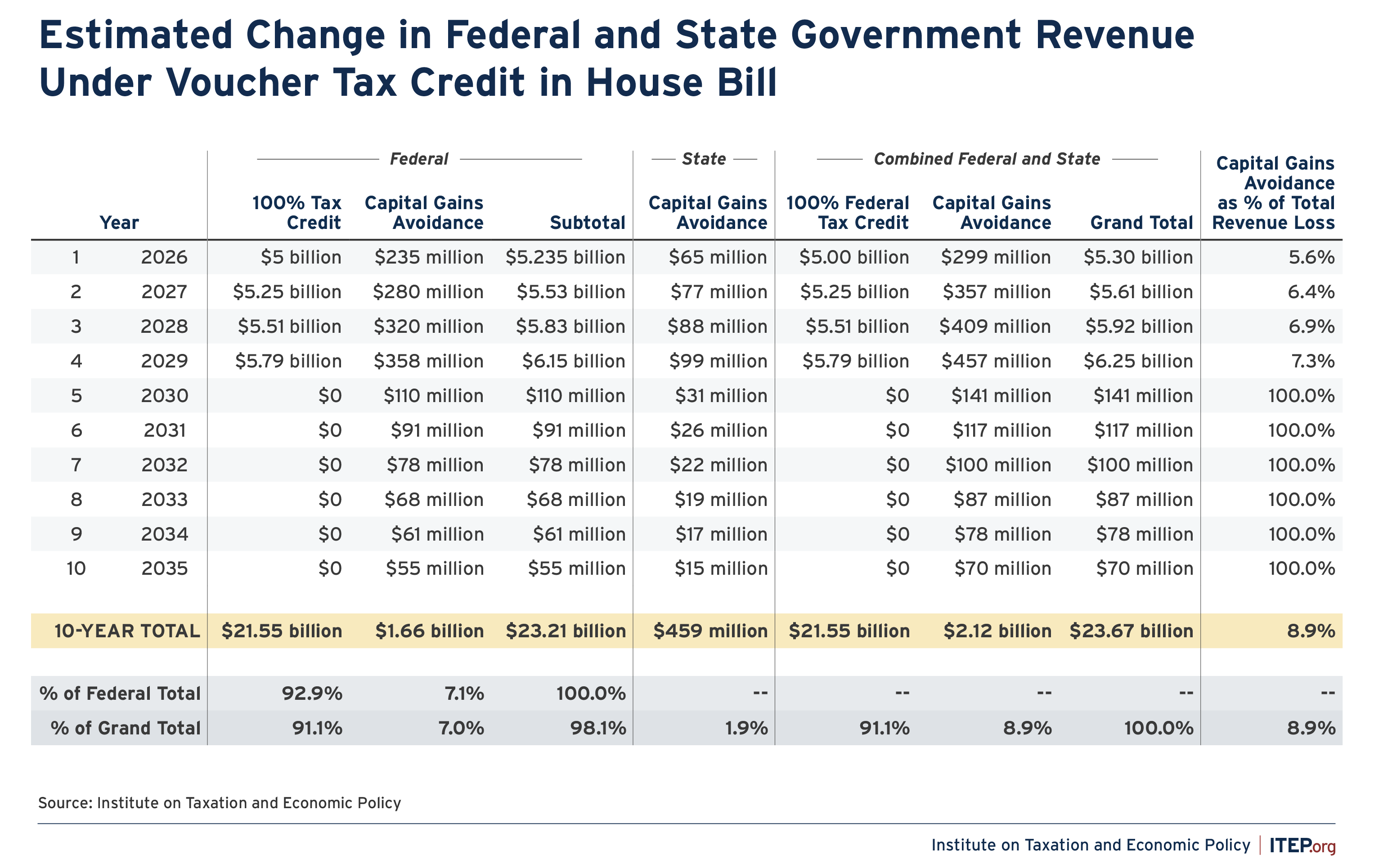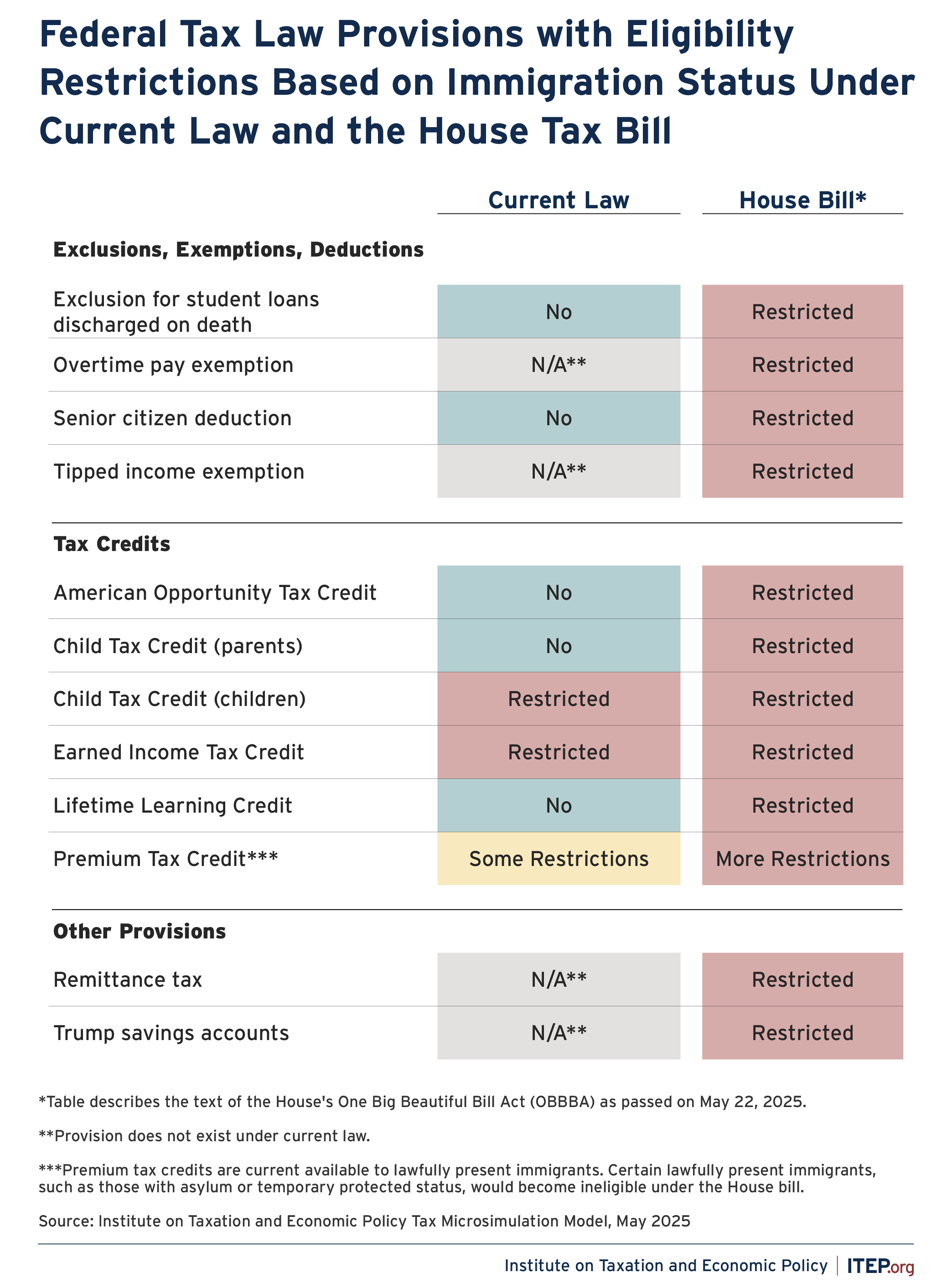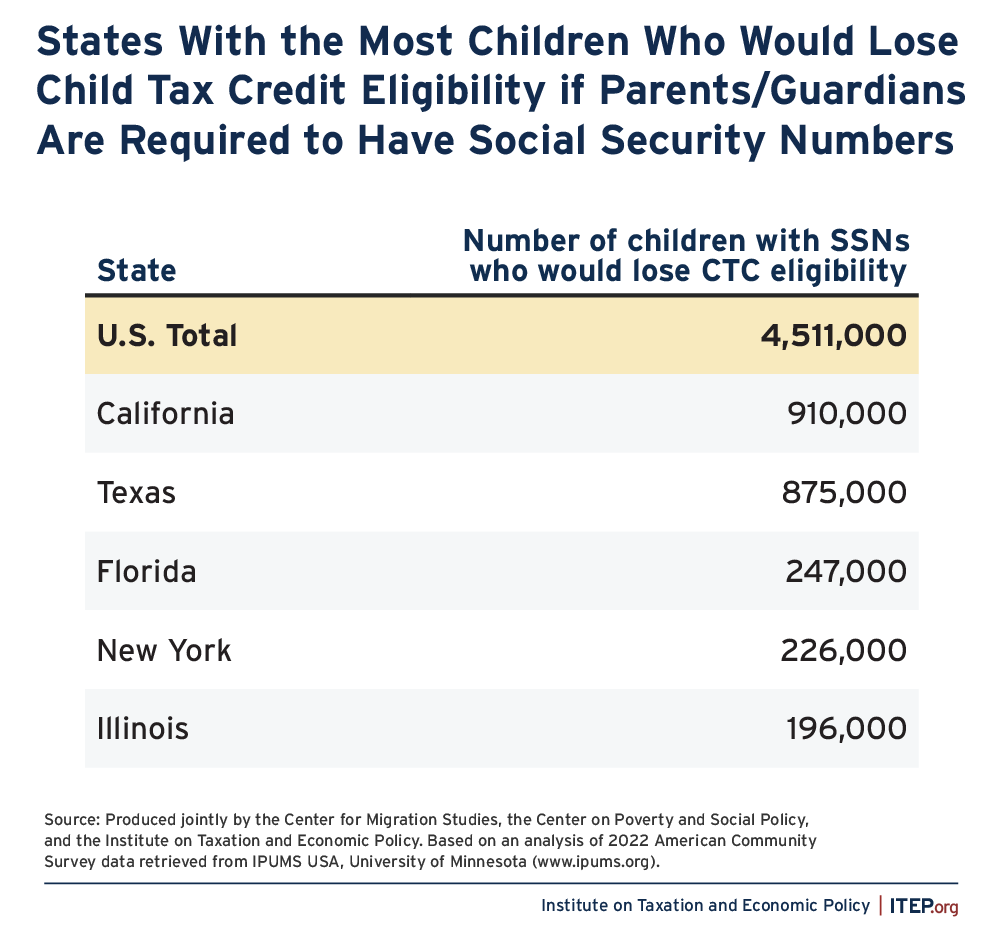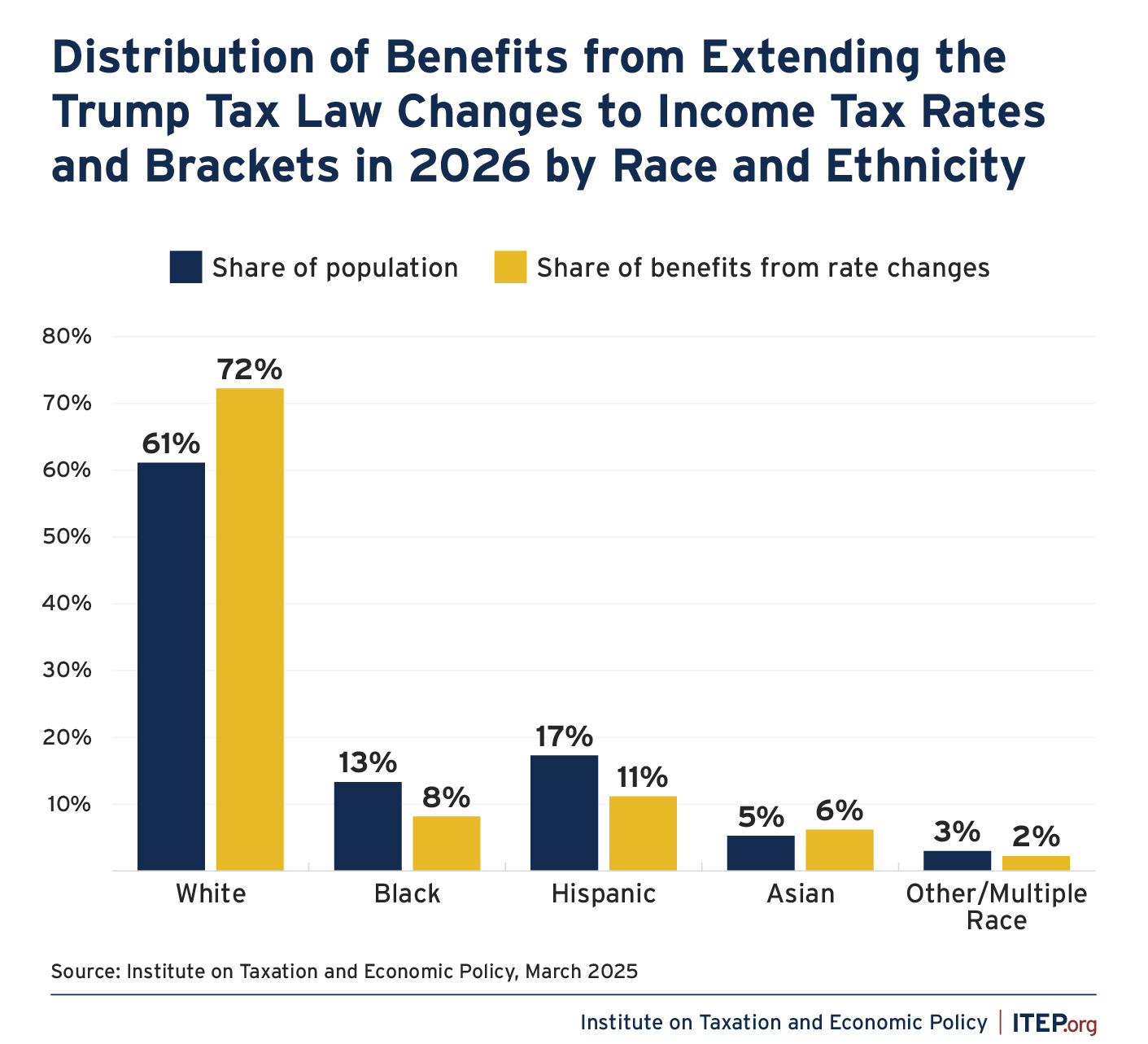Federal Tax Debate 2025
briefThe House of Representatives has passed its reconciliation bill that features massive tax cuts and deep cuts to spending.
The tax cuts in the House bill mostly flow to those who have the most. Roughly 68% of the tax cuts go to the richest 20% in the U.S. The campaign promises from President Trump play a small role in the overall tax cuts, as most of the benefits come from extending tax provisions from 2017. Some other notable changes would support private school voucher programs, harm immigrant communities, and widen income and racial inequality.
For working-class Americans, the tax cuts in the House bill are extremely modest, and overall taxes would rise for these families when the impact of tariffs are accounted for.
See the charts below to learn more about the effects of the House bill.
(Click on each chart to expand)
If Trump’s tax proposals were in effect in 2026, the richest 1% would receive an average tax cut of about $36,300 and the next richest 4% would receive an average tax cut of about $7,200.
All other groups would see a tax increase with the hike on the middle 20% at about $1,500 and the increase on the lowest-income 20% of Americans at about $800.
As a share of income, the tax increases would fall hardest on working-class families.
The middle 20% of Americans would face a tax increase equal to 2.1 percent of their income, while the poorest 20% of Americans would face a tax increase equal to 4.8% of their income – all while the top 5% get a tax cut.
The effects of President Trump’s tariff policies alone offset most of the tax cuts for the bottom 80% of Americans. For the bottom 40% of Americans, the tariffs impose a cost that exceeds the tax cuts they would receive under this legislation.
Three categories of tax provisions in the bill provide the biggest tax cuts to the richest 1%. These are the changes in tax rates and brackets, the pass-through deduction (section 199A), and the collection of business tax changes (which affect corporations and also other businesses).
Each of these three categories cuts taxes for the top 1% by more than $30,000 on average next year. The AMT and estate tax provisions provide more for the rich on top of that.
Provisions changing itemized deductions (most importantly the cap on itemized deductions for state and local taxes, or SALT) claw back an average $35,000 of the tax cuts for the richest 1%. The bill’s SALT cap, which is similar to but not identical to the SALT cap in the 2017 law, serves as a very partial limit on tax cuts for the richest Americans.
Figure 5: Most of the bill’s tax cuts come from extending the 2017 tax cuts that overwhelmingly helped the rich
One of the more remarkable takeaways from the Joint Committee on Taxation’s revenue estimates is just how insignificant the tax provisions discussed most during the last presidential campaign—especially tax breaks for tips, overtime, car loan interest, and senior citizens—are in the broader context of this enormous bill. These core features of the Trump campaign’s platform, which continue to dominate much of the debate over taxes today, come at a total cost of $293 billion. While that amount is not trivial, it equals just 3.8 percent of the $7.7 trillion gross tax cut being offered under this bill. The tax cuts being offered to businesses, by contrast, are more than four times larger.
As seen here, 85% of the tax bill represents an extension of the tax cuts first enacted by Republicans on a temporary basis in 2017. Of the remainder, only a small sliver are the highest-profile items getting an outsized share of the attention in the current tax debate.
The House bill includes a provision that would create an unprecedented dollar-for-dollar tax credit for donations to groups that fund private K-12 school vouchers. While the bill significantly cuts charitable giving incentives overall, donors to private K-12 school voucher groups would receive a full reimbursement of their donations, valued at 100 cents on the dollar. Meanwhile, donors to children’s hospitals, veterans’ assistance groups, and other charities would receive no more than 35 cents in tax savings for each dollar donated.
On top of that, the bill goes out of its way to provide school voucher donors who contribute corporate stock with an extra layer of tax subsidy that works as a lucrative tax shelter. Essentially, the bill allows wealthy individuals to avoid paying capital gains tax as a reward for funneling public funds into private schools.
Figure 7: The House bill creates a different, harsher tax code for immigrant filers and their citizen family members
Immigrant tax filers are already barred from accessing three tax provisions—the Earned Income Tax Credit, Child Tax Credit, and Premium Tax Credit. Immigrants therefore sometimes pay higher taxes than U.S. citizens in an otherwise comparable position.
The House bill would now apply new or stricter limits for immigrant tax filers to 10 additional areas of the tax code. This would cause the tax code to consider immigration status in a more fundamental way than is the case today. While current law restricts immigrants’ eligibility for a handful of tax credits the House bill, by contrast, would take immigration status into account for the first time in determining eligibility for certain exemptions and deductions used to measure taxable income.
Overall, these changes would transform the tax code from a somewhat neutral means of collecting revenue from people earning U.S. income regardless of immigration status into a more obviously punitive structure that subjects immigrants to harsher treatment.
The House bill includes a provision to strip the Child Tax Credit (CTC) from millions of children who are U.S. citizens and legal residents in situations where their parents do not have Social Security numbers (SSNs). In a joint study from the Center on Migration Studies, the Center on Poverty and Social Policy at Columbia University, Boston University Institute for Equity in Child Opportunity & Healthy Development, and ITEP, we found that 4.5 million citizen children with SSNs would lose access to the credit under this proposal.
As a result of tax law changes enacted by President Trump and a Republican Congress in 2017, the CTC may only be claimed for children with SSNs; that is, children who are citizens or legal permanent residents of the U.S. The credit may be claimed regardless of the immigration status of the tax filer (usually the child’s parent).
Republicans have shifted even further to the right on immigration since 2017, now believing that American citizens in mixed-status households should not qualify for the credit. Stripping the CTC from citizen children in these households (along with other actions taken by the current administration) will likely suppress the tax filing rate of these households.
The changes to income tax rates and brackets in Trump’s 2017 tax law were particularly expensive and beneficial to the richest individuals. These changes also disproportionately favored white taxpayers at the expense of others.
In 2026, Black taxpayers will make up 13% of the population but will receive only 8% of the benefits of extending the income tax rates and brackets. Hispanic taxpayers will make up 17% of the population but will receive only 11% of the benefits.
While these rate and bracket changes would result in a tax cut for some people in all income groups, nearly two-thirds of the benefits would go to the richest fifth of taxpayers, and more than a quarter would go to the richest 1%.
Figure 10: The House bill would encourage dynastic wealth hoarding by further weakening the estate tax
The sprawling tax and spending bill would cut more than $200 billion from food assistance, potentially affecting 4 million children and 7 million adults, while providing an estate tax cut costing roughly the same amount to a few thousand people who will leave behind more than $7 million to their heirs.
The bill would increase the estate tax exemption to $15 million for single people and $30 million for couples in 2026 and allow it to rise with inflation moving forward. In other words, a couple could leave $29.99 million to their heirs in 2026 without paying a cent of estate tax.
This would continue a decades-long effort to weaken a critical tool to prevent the hoarding of wealth from one generation to the next.

